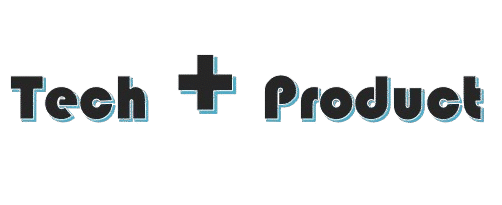Nonprofits don’t exist to make money, but they do need to manage it carefully. Every donation, grant, volunteer expense, and operating cost must be recorded properly. Whether you’re a small community group, a religious organization, or a national nonprofit, the reality is the same: the bookkeeping matters.
Yet, nonprofit bookkeeping is often handled by part-time volunteers, admin staff, or overworked finance teams juggling spreadsheets and late entries. Keeping up with QuickBooks isn’t easy when you’re managing dozens of funding sources, expense categories, and project budgets.
That’s where nonprofit bookkeeping automation can make a difference. It reduces the time you spend on manual data entry and helps ensure your financial reports are accurate, timely, and audit-ready.
Why Nonprofit Bookkeeping Is Uniquely Challenging
Bookkeeping for a nonprofit isn’t just about tracking income and expenses. You need to:
-
Categorize funds by donor restrictions (restricted vs unrestricted)
-
Track grants, event income, and in-kind donations separately
-
Attach supporting documents for every entry
-
Allocate expenses across multiple programs or departments
-
Reconcile accounts and prepare board reports regularly
And all of this has to be done while meeting reporting standards for the IRS, state regulators, and funders.
Many nonprofits rely on QuickBooks Online for day-to-day accounting. But when you’re manually entering each transaction, attaching receipts, and cleaning up records every month, it can feel like a second full-time job.
What Nonprofit Bookkeeping Automation Looks Like
Automation isn’t just about speeding things up. It’s about reducing errors, organizing your records, and helping your team focus on the bigger picture.
With a tool like SaasAnt Transactions Online, nonprofit teams can:
-
Upload donation records, grant expenses, or reimbursement forms in Excel, CSV, or PDF
-
Import hundreds of transactions into QuickBooks in just a few minutes
-
Categorize transactions based on fund type, donor name, or program
-
Apply templates for recurring grants, vendors, or funding sources
-
Attach receipts, award letters, or invoices to each record
-
Review and edit transactions in bulk before they go into the books
Instead of struggling to stay up to date, automation lets you catch up quickly and focus on what matters—managing your programs and reporting back to donors.
Common Nonprofit Workflows That Can Be Automated
Whether you’re handling bookkeeping in-house or through an outsourced accountant, here are the most useful ways to apply automation:
1. Donation and Contribution Records
If you receive online donations or manage membership dues, those records often come in spreadsheets. Upload them in batches, map each line item, and categorize by campaign or donor restriction. No need to enter one donation at a time.
2. Grant Expense Reporting
Grants often require detailed expense tracking. With SaasAnt, you can tag each expense to the correct grant, attach receipts or invoices, and keep everything audit-ready. You can even bulk import reports from staff or project partners.
3. Bank and Credit Card Reconciliation
Instead of relying on live bank feeds or copy-pasting from PDFs, upload your full bank statement and convert it into clean transaction data. This makes monthly reconciliation more accurate and significantly faster.
4. Program-Specific Budgets
If you run multiple programs – such as education, outreach, and fundraising – categorizing expenses correctly is critical. With automation, you can set rules to assign each vendor or expense type to the correct class or location in QuickBooks.
5. Event and Campaign Tracking
Upload ticket sales, vendor payments, or volunteer reimbursements related to a specific event. This gives you a complete picture of income and expenses for each fundraiser or outreach initiative.
6. Payroll Journal Entries
If you use a separate payroll provider, you can import summary journal entries into QuickBooks for salary expenses, taxes, and benefit costs – broken down by program or department.
Why SaasAnt Works Well for Nonprofits
Many automation tools are built for large corporations or accounting firms. SaasAnt is designed to work for organizations that don’t have a full-time accounting team but still need to manage data cleanly.
Here’s why it fits:
-
Accepts Excel, CSV, PDF, and scanned formats for uploads
-
Lets you bulk import, edit, and delete transactions as needed
-
Works with QuickBooks Online and Desktop
-
Supports class, location, and custom fields commonly used in nonprofits
-
Includes document attachment and transaction preview before finalizing
-
Helps reduce errors and saves hours every week
Whether you’re handling data from a donor CRM, staff reimbursements, or vendor bills, SaasAnt helps you bridge the gap between real-world records and clean, organized books.
Real Example: A Small Team with Big Responsibilities
A mid-sized nonprofit that runs four community programs and five annual fundraisers was spending nearly 40 hours a month on bookkeeping tasks. Their finance manager had to track donor gifts, split expenses between programs, and compile reports for the board.
Before SaasAnt:
-
Staff sent receipts via email, which were added manually
-
Donations from online platforms were exported, then cleaned up in Excel
-
Reconciliation took over a week, often delaying financial reporting
After implementing SaasAnt:
-
All incoming donations were uploaded in bulk and tagged by fund
-
Expense reports from staff were imported with attachments in minutes
-
Financials were ready before the monthly board meeting
-
Audit preparation time was cut in half
Their team didn’t need to hire more staff. They just streamlined the process.
What You Gain with Bookkeeping Automation
-
Time saved from repetitive entry and formatting
-
Fewer errors in financial records
-
Improved grant and donor reporting accuracy
-
Faster monthly close and board reporting
-
A more efficient year-end audit experience
Automation helps nonprofits stay focused on their mission, not just on their spreadsheets.
Getting Started
You don’t have to overhaul your whole system. Start with one or two processes – such as uploading donation reports or importing staff expense summaries. From there, expand to other workflows as your team gets comfortable.
Once you see the results, you’ll wonder how you ever managed without it.
If your nonprofit is using QuickBooks but struggling to keep the books clean and up to date, it’s worth exploring how SaasAnt Transactions Online can help.
Automation doesn’t just make your bookkeeping faster – it helps you tell a better financial story to your donors, board, and community.




